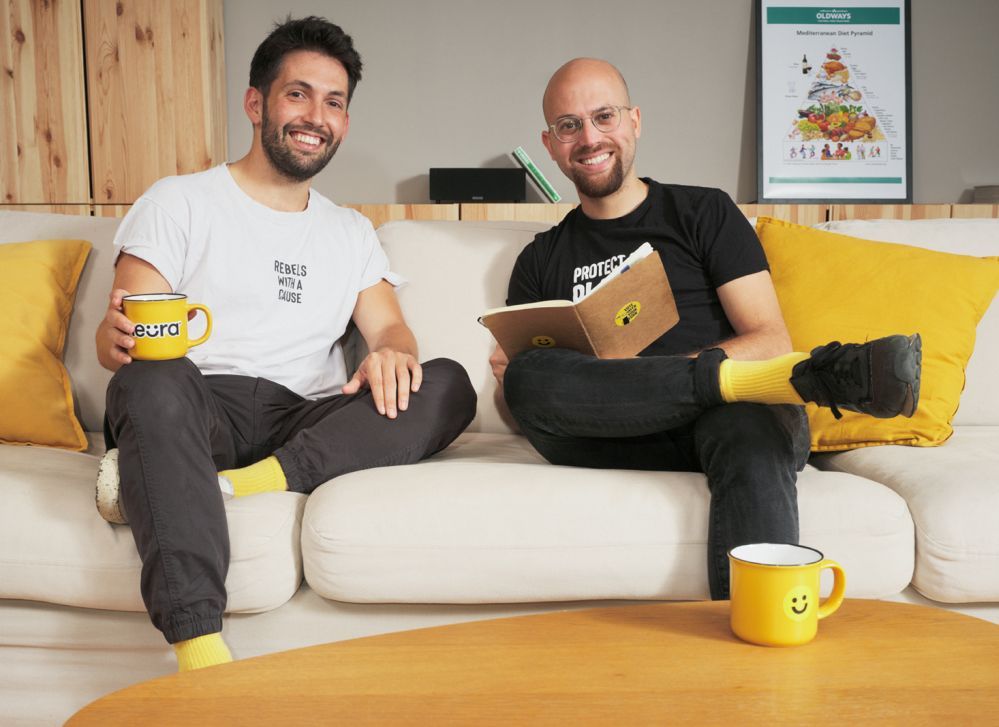Two days after Beyond Meat posted an 18% decline in sales to $343.4 million coupled with a $338.1 million net loss in 2023, plant-based meat startup Heura posted a 22% increase in sales to €38.3 million ($41.5 million) and says it’s on course to turn a profit next year.
While solidifying its leadership in its home market of Spain, Heura’s international sales grew 63% in 2023, with moves into high-profile European retailers including Intermarche in France, Auchan in Portugal, Pam in Italy, Colruyt in Belgium and Waitrose in the UK. It also struck foodservice deals with Vueling, Hilton and Royal Caribbean, and Serunion.
Barcelona-based Heura, which has raised €56 million ($61 million) since it was founded by Bernat Añaños and Marc Coloma in 2017, also announced a partnership with plant-based spreads and cheese maker Upfield and unveiled plans to license patent-pending technology it claims is cheaper and more effective than extrusion at texturizing plant proteins.
New texturizing process
Heura’s ‘process-controlled microstructure design’ technology involves a combination of heating, cooling and mixing and does not require expensive bespoke equipment, claims the firm, which debuted the tech in its additive-free York Ham Style cold cuts last fall. According to CEO Marc Coloma, the products “became the top seller in the deli plant-based category in Spain” within three months Spain, contributing to 52% of the segment’s growth in the last quarter of the year.
The process creates emulsions that deliver novel textures and improved functionality with a clean label, said Coloma in a recent call with AgFunderNews.
“Our technology is a new way of texturizing plant-based proteins and lipids without extrusion enabling us to create clean label products in categories there were impossible until now, in a scalable and cost-effective way. For our ham, we don’t need to use additives [such as hydrocolloids] to bind the product together. We can also use [the new technology] for cheese, pasta and a range of other products.”
Science and technology director Isabel Fernández added: “It is higher-throughput and uses a lot less energy than extrusion, and it can generate a wider range of textures. We can also make whole cuts.”

New patent applications
Heüra is also exploring approaches to making meat alternatives that don’t rely on protein isolates and concentrates, revealed Fernández. “We discovered a way to exploit the functionality of specific plant cell wall materials in their native structures so that we don’t need to go through any extraction process. Some of these materials are byproducts of the food industry.
“Once ready, we will be able to partially or totally replace protein isolates, depending on the product application. They can also be combined with our texturization technology.”
High repeat rates
While sales of plant-based meat have begun to stagnate in some European markets, Heura is bucking the trend, and has the highest repeat rates of the category—”50% above the category average”—in its domestic market (Spain), claimed Coloma. “Our vision is to become the European champion of plant-based meats.”
Asked about recent category weakness in some markets, he said, “I think many people got into the category super-fast with products that didn’t meet consumer expectations; even some multinationals were seeing repeat rates of 30% or lower. At one point, more or less everything was getting listed, whereas now, there has been a reconfiguration of the category and retailers are giving more space to products that are giving consumers what they are looking for and enhancing category growth.”
Profitable in 2025
While activism for animals and the environment is important to Añaños and Coloma (who like to refer to themselves as ‘Rebels with a cause’), the primary purchase drivers for consumers are taste and health, he said.
“We know that people are coming into this category for health reasons, so we have more protein, less fat and less saturated fat, fewer calories, and a cleaner label. But we are also creating better performance so fat is not released into the pan when you cook the product, and we can create a better experience with less fat in the formulation.
“With this new technology, we will be able to go to the next generation of products that will allow us to reduce costs, and we’ve already communicated that in 2025, the company will be profitable. We are serving consumer needs on one end but also scalability challenges on the other by leveraging existing infrastructure without needing too much capex.”
Further reading:




